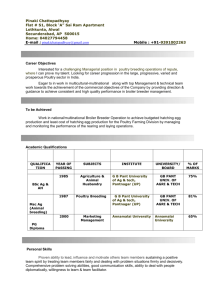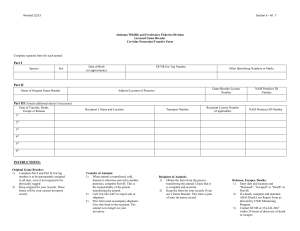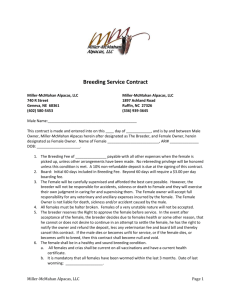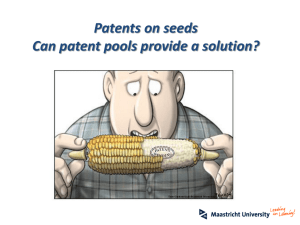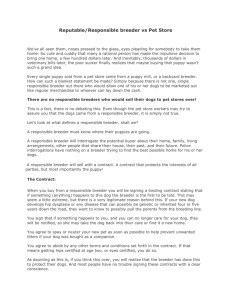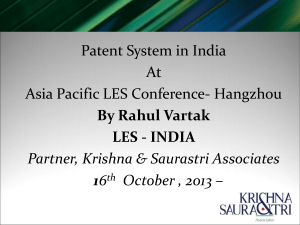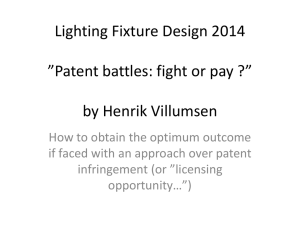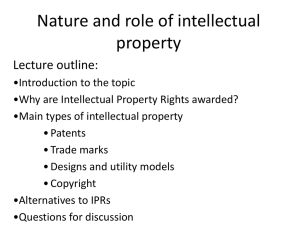Plantum
advertisement
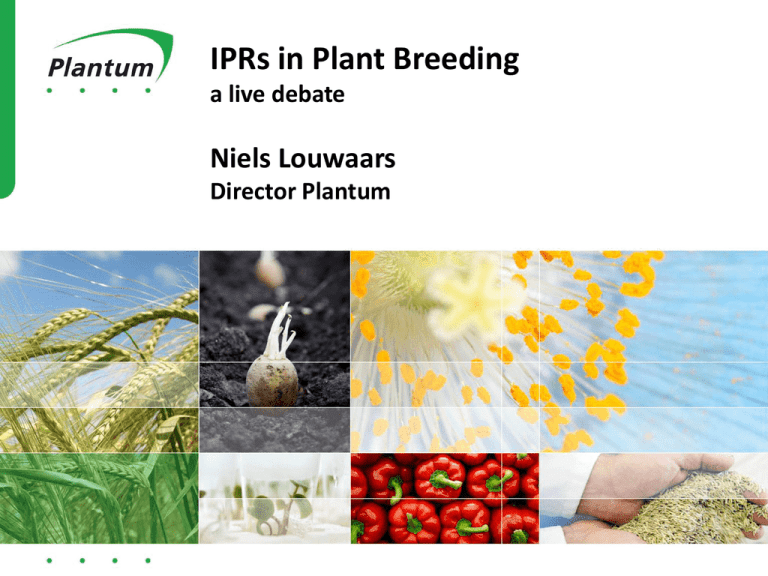
IPRs in Plant Breeding a live debate Niels Louwaars Director Plantum Plantum Plantum: 350 members - Plant breeding/selection - Production of seeds + other propagating materials - Tissue culture - Trade in planting materials - Turnover € 2.2 billion - Export € 1.8 billion Field crops Ornamentals Vegetable seed Young vegetable plants The Netherlands - No. 1 exporter in the world: especially horticulture and seed potato Intellectual Property • Plant breeding involves significant investments (in The Netherlands approax 300 m€ /year by the public sector; approx 20 m€/year) • The products of research (plant varieties) can in most cases be easily reproduced • Protection of intellectual property is thus essential for the seed sector. • • • • Breeder’s rights Trademarks Trade secretrs Patents • IP is a right to explude others from commercialising the protected subject matter Patents designed for industrial inventions • Inventions that are new, involve an inventive step (are ‘non-obvious’) and have an ‘industrial application’ • Protection for 20 years • Since 1980s (in USA) and 1998 (EU) also applicable to biotechnological inventions • Initially GMO technologies • In USA also for varieties (not in EU) • In last decade also applied to ‘native traits’ • Internationally ‘harmonised’ since 1883 (WIPO) Breeder’s Rights based on agri – “culture” • Special system designed for protecting plant varieties • Special requirements (compared to patents): o Distinctness, uniformity, stability (instead of inventive step), novelty (different from novelty in patents) o Description based on biological nature (self/cross fertilisers) • Breeder’s exemption • Farmers’ Privilege • Easy application (no lawyers needed) • Internationally harmonised since 1961 (UPOV) Breeder’s Rights and Patents • Situation – a new variety with patented traits/genes • Breeder has the right on the variety but the holder of the patent(s) can decide whether the variety may be marketed – and may decide royalty on the gene • Other breeders cannot use the variety for further breeding – and can use neither the gene nor the genetic background for further innovation • Patent holder has a very strong position. Opposition against patents • Plantum (2009): patents are blocking innovation in breeding. Need a full breeder’s exemption in patent law (majority position) • ESA (2011): no patents on native traits + limited breeder’s exemption + inventing around procedure • ESA (2013): patent database for transparency • ISF: limited breeder’s exemption + extension of patent duration (in some cases) Developments Legislator • EU: limited breeder’s exemption in new ‘unitary patent system’ • EU: report on the Biotechnology Directive due early 2014 Courts • European patent office: court cases about native traits (broccoli/tomato) • US/EU court cases tend to limit patent rights on human genes, on biotech inventions • EPO works on ‘raising the bar’ • Industry • Vegetable breeders: work on an agreement to avoid ‘strategic patenting’ • ESA patent database Intellectual property rights are essential for sustainable investments in plant breeding IPRs have to balance the interests of the holder of the rights and society Currently, the debate in EU concentrates on the relation patents/breeder’s rights In LDCs also on the relation breeder’s rights/farmers’ rights
